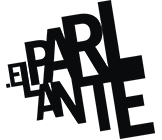Dare: Dare to want someone you want and not someone you are supposed to want!
In the summer of 2015 we put a particular turn of work on Edu-comunicación that we have been doing until now. We had just participated in a training of the Candela Association to involve the gender perspective in our projects and, suddenly, emerged in St. Andrew The idea of making a participatory video where the group of young people had decided to explain in a fictional short all those stereotypes we had about the relationships between boys and girls.
Without a doubt, it was a fantastic opportunity to develop for the first time everything we had worked on in the workshops with our colleagues from Candela. This is how Atreveix-te emerged, an initiative of the FEDAC Schools to make participatory video with seven young people from the neighborhood who signed up for the Casal de Verano that year.
With barely a week available to outline the story and characters, write the script, cast, rehearse and record, young people and speakers launched into the adventure. In this sense, Natalia recognizes that the first session was key to the success of the project: “We saw audiovisual pieces where debates about love relationships and imposed heteronormativity emerged. From there we work The script”. Thus, from media criticism come the emotions and stories that are hidden behind certain topics. She recalls that “they felt very identified and identified with the subject of gender expression, because not because of the fact of having a gender expression that implies a certain sexual orientation”.
“We decided to work on a story that the group knew, and although it’s not based on a real story, the theme stirred up a lot throughout the group.” It was about telling a series of crossroads of feelings between girls and boys of the same group and talking about it from different perspectives, on the one hand the prejudices that a group can have with respect to the gender expression of a colleague, and on the other hand, the reality that that same person lives in their intimidation. The idea of the video was beginning to take shape, but now I had to choose what profiles were to be presented on stage, with what Stereotypes were to mark history.
“As history emerged from the boys, we decided to work on the different ideas of hegemonic masculinity that there is and how we could dismantle this”, explains Natalia. There was a boy who said that he had an expression of gender more associated with The feminine, there were people who already labeled him saying he was gay and he should deny it all the time.” So it was decided at the group level that the role would be for a boy. The rest of the house was all very fast, a casting, a couple of days of filming and even a theatrical presentation gala. But with such a compact and determined work group, it is very easy to work, insists Natalia. And not to tell more details that could ruin the story, why don’t you see the video that emerged from this story!
